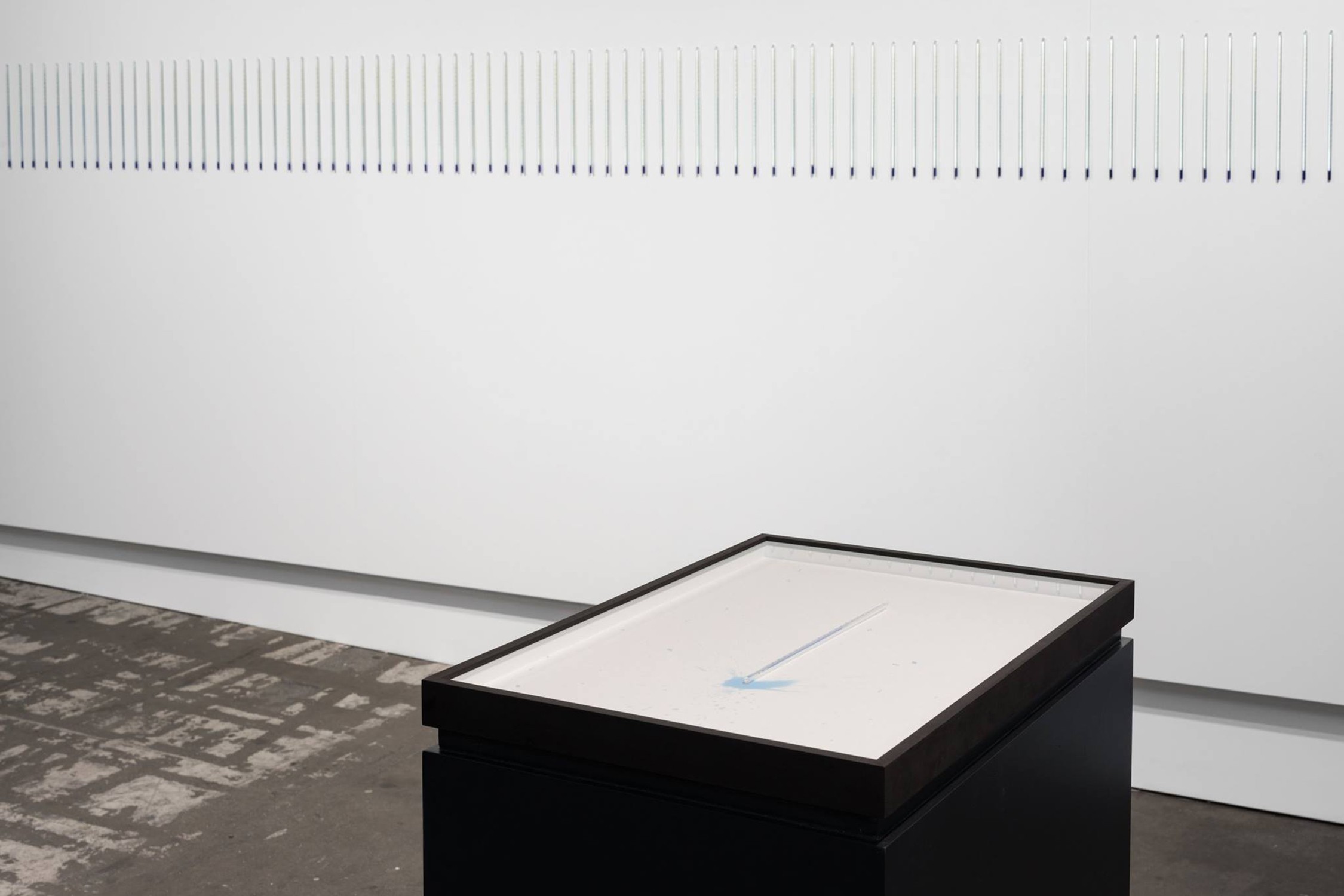


Lies and interpretation
Text Lukas Töpfer
A good two years ago, Fabian Knecht began learning the trade of thermometer making – in a traditional manufacture, from the ground up, with the utmost care and precision. He planned a work to be carried out with his own hands – timeless, commonplace. An intervention that changes everything: nothing.
“UNVERÄNDERUNG” (Unchange) consists of 98 handmade and enumerated thermometers, the analogue scales of which show the temperature measured reduced by 2° Celsius. The (un)change refers to the disputed goal decided upon by the UN Climate Conference in 2010 to limit the increase of the global average temperature to 2° Celsius. Current data suggest that the target can hardly be achieved without major intervention and that the 2° limit has already been briefly exceeded in the northern hemisphere, as was reported in March[1]. Whether 2° has been calculated too high or too low is therefore being discussed controversially. The proponents and opponents of the goal accuse each other of lying.
Just how problematic and politically far-reaching the interpretation of the temperature changes can be was shown by, among other things, the most recent Assessment Report of the Intergovernmental Panel on Climate Change (IPCC), which warned of increased dryness and drought that could be placed in a context with famine and refugee migrations, as well as with violence and civil wars. Current data suggest (as always ambiguously, requiring interpretation, disputed) that such factors were already decisive for the outbreak of the civil war in Syria in 2011. The political consequences of climate change are therefore discussed controversially. The various parties accuse one another of lying.
“The rain fell in threads like long glass needles which shattered on the roofs, or lashed against windows in transparent waves, and each house was a ship which reached port only with the greatest of difficulty on that winter ocean.”[2]
“So, in the end, the sailor still clings fast / To the rock on which he should have foundered.”[3]
The questionable, if predominantly quietly tolerated, practice of surrounding important works with little lies about their origin and relevance is widely distributed. The works are thus not only placed in a positive light, like in the previous text, but are instead suggestively enriched with meaning that “actually” doesn’t belong to them.
[1] Knecht had already completed a prototype of his work in February 2016: an object located between classic craftsmanship (traditionally produced at a high level of quality) and conceptual, political art (with a secondary utility value).
[2] From the memoirs (1973) of the Chilean poet and politician Pablo Neruda.
[3] The last two verses from the final dialogue of the poet Torquato Tasso in Johann Wolfgang von Goethe’s play of the same name (1790).